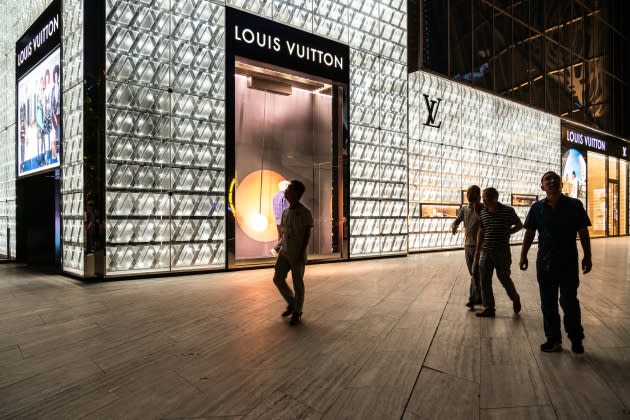China Economy Growth Dips to 0.4 Percent, Retail Sales Recovering Slowly

SHANGHAI — China’s strict COVID-19 restrictions led to a gross domestic product growth rate of only 0.4 percent year-over-year in the second quarter, according to the latest data released by the National Bureau of Statistics.
It is the world’s second-largest economy’s weakest GDP growth since the coronavirus outbreak in the first quarter of 2020.
More from WWD
Retail sales grew 3.1 percent in May compared to the same time last year, while in the first half of this year, retail sales contracted 0.7 percent year-over-year.
Apparel retail, or what the bureau terms clothing, shoes, hats and knitting textiles sales, rose 1.2 percent year-over-year to 119.8 billion renminbi, or $17.7 billion, in June but dropped 6.5 percent for the first half of 2022.
Hit by various COVID-19-related lockdown measures in recent months, Beijing’s GDP dropped 2.9 percent in the second quarter from a year earlier, and Shanghai’s contracted a sharp 13.7 percent in the same period. The Chinese economy is on course to “stabilization and recovery,” according to Linghui Fu, spokesperson of the NBS.
To reach the goal of 5.5 percent GDP growth for 2022, the Chinese government has unveiled a broad package of economic support measures to stimulate the economy, including tax cuts and funneling money into public infrastructure projects.
“The main downward pressure that caused less-than-expected economic growth came from the housing market,” said Dan Wang, chief economist at Hang Seng Bank China. According to Friday’s data, real estate investment dropped 5.4 percent year-over-year in the second half of 2022.
In recent weeks, homebuyers in more than 50 cities refused to pay mortgage payments on unfinished projects. According to Bloomberg, regulators and banks are in discussion on how to prevent the disaster from spreading to other sectors.
“In the second half of this year, the real estate pressure will continue even if COVID[-19]- related measures have managed to ease. The housing market will continue to weaken as income increase slows, which in turn puts more liquidity pressure on property developers,” said Wang.
As for the luxury retail market, growth prospects will also remain lackluster. A Barclays report on the luxury retail market published on Tuesday predicted “slightly negative to flattish growth in China” this year, but the investment bank “continues to favor luxury names with a strong portfolio, including LVMH [Moët Hennessy Louis Vuitton] and Richemont.” Barclays expects luxury sales in Asia-Pacific to climb by around 5 percent in the second half of 2022.
Whether the fashion sector will see a rebound this year will largely depend on “the confidence of the young and rich,” according to Wang.
Cities such as Shanghai, Xi’an, Macau, and Hainan’s Haikou started imposing COVID-19 lockdowns in recent weeks, as the Chinese government is vowing to stick to its zero-COVID-19 policy.
Related:
Luxury Faces Headwinds in China, Room to Grow in the Americas
China COVID-19 Resurgence Hampers Luxury Consumption Growth
China’s Retail Sales Contract, but Demand for Luxury Is Back
Sign up for WWD's Newsletter. For the latest news, follow us on Twitter, Facebook, and Instagram.

